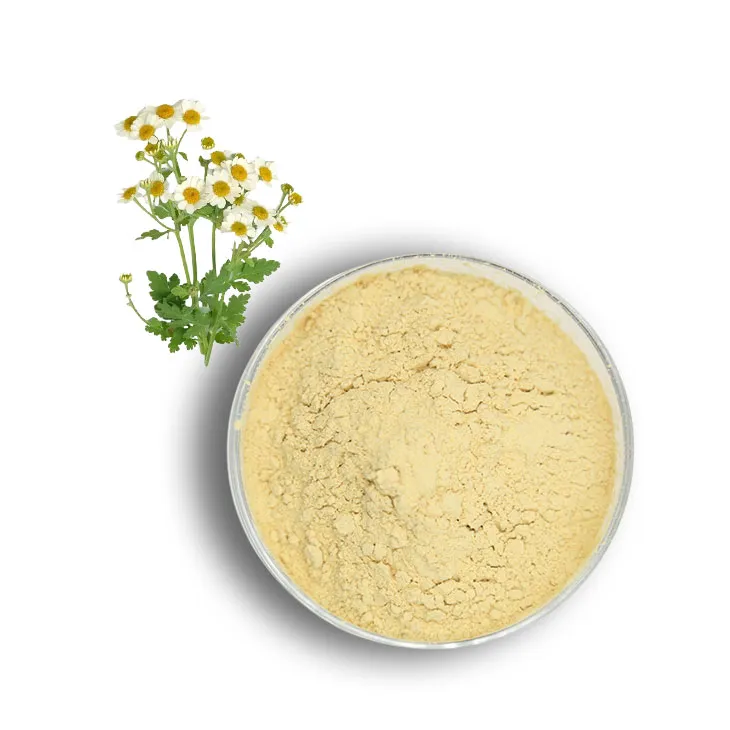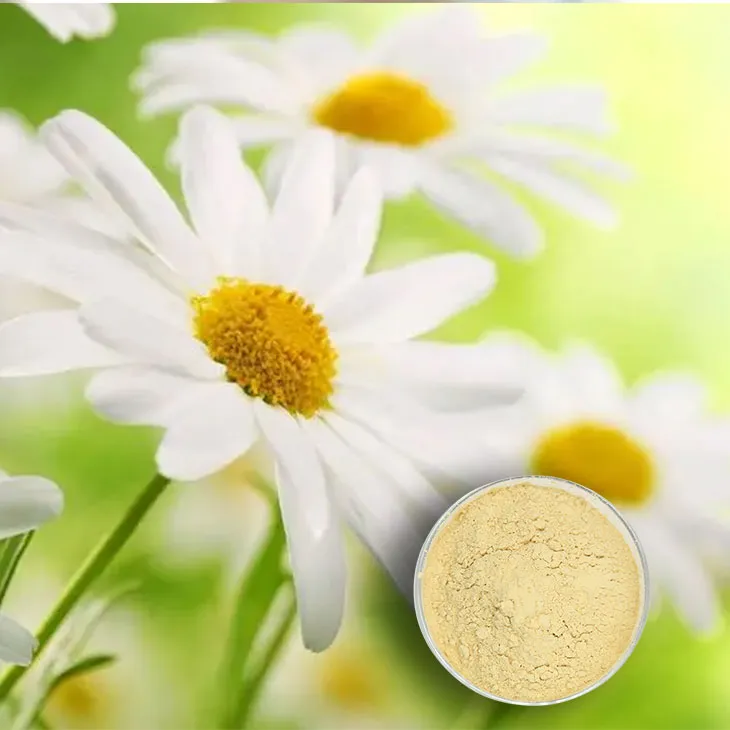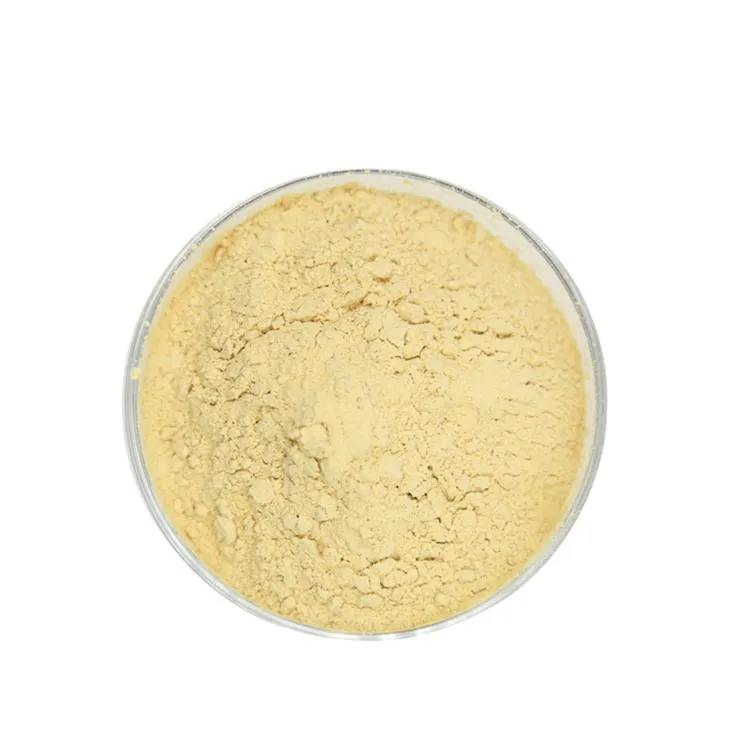- 0086-571-85302990
- sales@greenskybio.com
The best - quality feverfew extract.
2024-11-30

1. Introduction to Feverfew Extract
Feverfew Extract has emerged as a remarkable natural substance with a wide range of potential applications. It is obtained from the feverfew plant, which is characterized by its white - flowered appearance. This extract has been gaining increasing attention in recent years due to its various beneficial properties.

2. The Source: The Feverfew Plant
2.1. Botanical Features
The feverfew plant, scientifically known as Tanacetum parthenium, is a herbaceous perennial. It typically has small, daisy - like white flowers and fern - like leaves. This plant is native to parts of Europe and Asia but has now been cultivated in many other regions around the world.2.2. Cultivation Requirements
- Feverfew plants thrive in well - drained soil. Good soil drainage is crucial to prevent waterlogging, which can lead to root rot and other diseases.
- They prefer full sun to partial shade. Adequate sunlight exposure is necessary for proper growth and the production of the compounds that are valuable in the extract.
- Regular watering is required, but over - watering should be avoided. A balance needs to be struck to ensure the plants are neither too dry nor too wet.

3. Beneficial Compounds in Feverfew Extract
3.1. Sesquiterpene Lactones
One of the most important groups of compounds in feverfew extract is sesquiterpene lactones. These compounds are thought to be responsible for many of the extract's medicinal properties. They have been the focus of numerous scientific studies investigating their anti - inflammatory and analgesic (pain - relieving) effects.3.2. Flavonoids
Flavonoids are another class of compounds present in feverfew extract. Flavonoids are known for their antioxidant properties. In the context of feverfew extract, they may contribute to overall health by neutralizing free radicals in the body. Free radicals can cause damage to cells and are associated with various diseases and aging processes.3.3. Volatile Oils
The volatile oils in feverfew extract give the plant its characteristic aroma. These oils may also play a role in the plant's medicinal and cosmetic applications. They can have antimicrobial properties, which can be useful in preventing infections, and may also have a soothing effect on the skin and mucous membranes.
4. Medicinal Potential of Feverfew Extract
4.1. Anti - Inflammatory Effects
Studies have suggested that feverfew extract may have significant anti - inflammatory effects. Inflammation is a natural response of the body to injury or infection, but chronic inflammation can lead to various health problems such as arthritis, heart disease, and certain cancers. The sesquiterpene lactones in feverfew extract are believed to inhibit the production of inflammatory mediators in the body, thereby reducing inflammation.4.2. Pain - Relieving Properties
- Feverfew has a long history of use in traditional medicine for pain relief. Some research has indicated that it may be effective in reducing headaches, including migraines. The exact mechanism by which it relieves pain is not fully understood, but it is thought to be related to its effect on neurotransmitters and blood vessels in the brain.
- It may also have potential in relieving other types of pain, such as joint pain associated with arthritis. However, more research is needed to confirm these effects and to determine the appropriate dosage and administration methods.

5. Cosmetic Applications of Feverfew Extract
5.1. Skin Health Promotion
- Feverfew extract can be beneficial for skin health. It may help to reduce redness and irritation, making it suitable for use in products for sensitive skin. The anti - inflammatory properties of the extract play a key role in this regard, as skin redness and irritation are often associated with inflammation.
- It may also have a role in promoting skin healing. For example, in cases of minor cuts or abrasions, the extract could potentially speed up the healing process by reducing inflammation and preventing infection through its antimicrobial properties.
5.2. Anti - Aging Effects
- The antioxidant flavonoids in feverfew extract can help to combat the signs of aging. Free radicals in the environment and as a result of normal metabolic processes can damage skin cells and lead to the formation of wrinkles, fine lines, and age spots. By neutralizing these free radicals, the extract can help to maintain the youthful appearance of the skin.
- It may also improve skin elasticity. This is important for keeping the skin firm and supple, and can contribute to a more youthful complexion.

6. Feverfew Extract in Dietary Supplements
6.1. Natural Alternative for Well - Being
Feverfew extract is being explored as a natural alternative in the field of dietary supplements. Many people are increasingly interested in natural products for maintaining their health and well - being. As it contains a variety of beneficial compounds, it has the potential to offer a range of health benefits when consumed as a dietary supplement.6.2. Safety and Dosage Considerations
- While feverfew extract is generally considered safe for most people when taken in appropriate doses, it is important to note that some individuals may experience side effects. These can include mouth sores, digestive problems, and allergic reactions in rare cases.
- The appropriate dosage of feverfew extract in dietary supplements can vary depending on factors such as age, health status, and the specific purpose of use. It is recommended that individuals consult a healthcare professional before starting to take feverfew - based supplements.
7. Production of High - Quality Feverfew Extract
7.1. Cultivation of the Feverfew Plant
- To produce high - quality feverfew extract, the cultivation of the feverfew plant is of utmost importance. As mentioned earlier, proper soil conditions, sunlight exposure, and watering are essential for healthy plant growth. Organic farming methods are often preferred as they can help to ensure that the plants are free from pesticides and other harmful chemicals, which could potentially contaminate the extract.
- Quality control during cultivation also involves regular monitoring of the plants for diseases and pests. Early detection and treatment of any issues can help to ensure that the plants are in the best possible condition for extraction.
7.2. Extraction Methods
- There are several extraction methods that can be used to obtain feverfew extract. One common method is solvent extraction, where a suitable solvent such as ethanol or methanol is used to dissolve the desired compounds from the plant material. The choice of solvent can affect the quality and composition of the extract.
- Supercritical fluid extraction is another advanced method that is sometimes used. This method uses supercritical carbon dioxide as the extraction medium, which can offer advantages such as better selectivity and the ability to produce a purer extract without leaving behind harmful residues.
- After extraction, the extract is typically purified and concentrated to remove any impurities and to increase the concentration of the beneficial compounds. This purification process is crucial for ensuring the high quality of the final product.
8. Conclusion
Feverfew extract is truly a natural treasure with its wide range of potential applications in medicine, cosmetics, and dietary supplements. The high - quality extract, obtained through careful cultivation and precise extraction methods, offers a wealth of beneficial compounds. However, more research is still needed to fully understand its properties and to optimize its use. As consumers become more interested in natural products, feverfew extract is likely to continue to gain in popularity and importance in the coming years.
FAQ:
What are the main beneficial compounds in feverfew extract?
Feverfew extract contains several beneficial compounds. One of the most notable is parthenolide, which is often associated with many of its potential health - related properties. Additionally, it may also contain flavonoids and other phytochemicals that contribute to its overall effect.
How does feverfew extract show anti - inflammatory effects?
The anti - inflammatory effects of feverfew extract are thought to be related to its active compounds. Parthenolide, for example, may interfere with the body's inflammatory pathways. It can potentially inhibit the production of certain inflammatory mediators, thereby reducing inflammation at the cellular level.
Can feverfew extract be used for all types of skin irritation?
While feverfew extract has shown promise in helping with skin redness and irritation, it may not be suitable for all types of skin irritation. Different types of skin irritations have various causes, and individual skin sensitivities also play a role. However, for general redness and some mild inflammatory skin conditions, it can be a beneficial addition to skincare products.
What are the key steps in the production of high - quality feverfew extract?
The production of high - quality feverfew extract begins with careful cultivation of the feverfew plant. This includes providing the right growing conditions such as proper sunlight, soil quality, and water. After that, precise extraction methods are used. These can involve techniques like solvent extraction or supercritical fluid extraction to ensure that the active compounds are effectively isolated while maintaining the integrity of the extract.
Is feverfew extract safe for long - term use in dietary supplements?
While feverfew extract shows potential in dietary supplements, its long - term safety is still an area of ongoing research. In some cases, it may cause side effects such as mouth ulcers or gastrointestinal discomfort in a small number of people. However, when used within recommended dosages, it may be generally safe for many individuals. But more research is needed to fully determine its long - term safety profile.
Related literature
- The Pharmacological Properties of Feverfew Extract"
- "Feverfew Extract in Cosmetic Applications: A Review"
- "Feverfew and its Extract: A Promising Natural Supplement"
- ▶ Hesperidin
- ▶ citrus bioflavonoids
- ▶ plant extract
- ▶ lycopene
- ▶ Diosmin
- ▶ Grape seed extract
- ▶ Sea buckthorn Juice Powder
- ▶ Beetroot powder
- ▶ Hops Extract
- ▶ Artichoke Extract
- ▶ Reishi mushroom extract
- ▶ Astaxanthin
- ▶ Green Tea Extract
- ▶ Curcumin Extract
- ▶ Horse Chestnut Extract
- ▶ Other Problems
- ▶ Boswellia Serrata Extract
- ▶ Resveratrol Extract
- ▶ Marigold Extract
- ▶ Grape Leaf Extract
- ▶ blog3
- ▶ blog4
-
High - quality Chasteberry Extract Products.
2024-11-30
-
China's banana juice powder suppliers.
2024-11-30
-
Bulk purchase of cranberry extract.
2024-11-30
-
How to make powder with bayberry extract?
2024-11-30
-
The best peony root extract in nature.
2024-11-30
-
100% Pure Organic Baicalin.
2024-11-30
-
Senna Leaf Extract
2024-11-30
-
Black Rice Extract
2024-11-30
-
Bilberry Extract
2024-11-30
-
Elderberry Extract
2024-11-30
-
Red Wine Extract
2024-11-30
-
Chaste Berry Extract
2024-11-30
-
Nettle Root Extract
2024-11-30
-
Tongkat Ali Extract
2024-11-30
-
Grapefruit Seed Extract Powder
2024-11-30
-
Wheat Germ Extract
2024-11-30





















